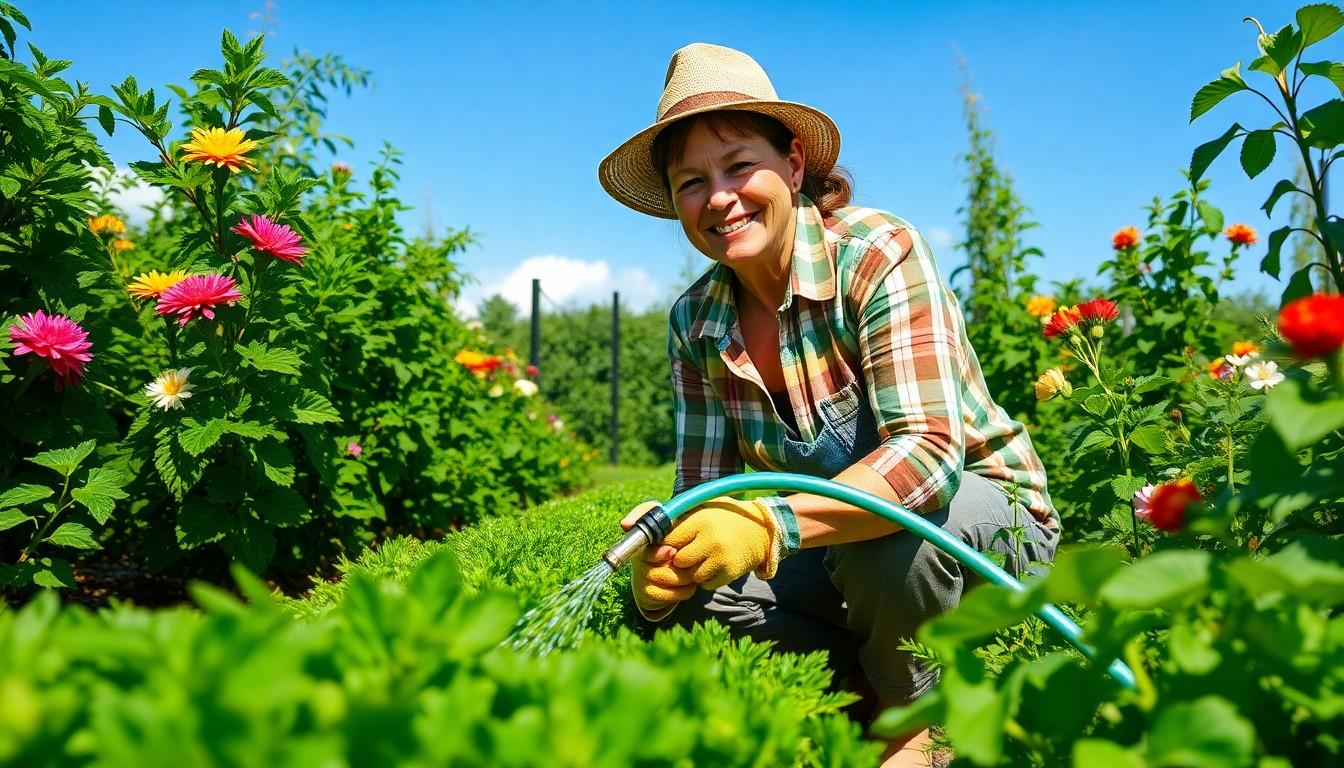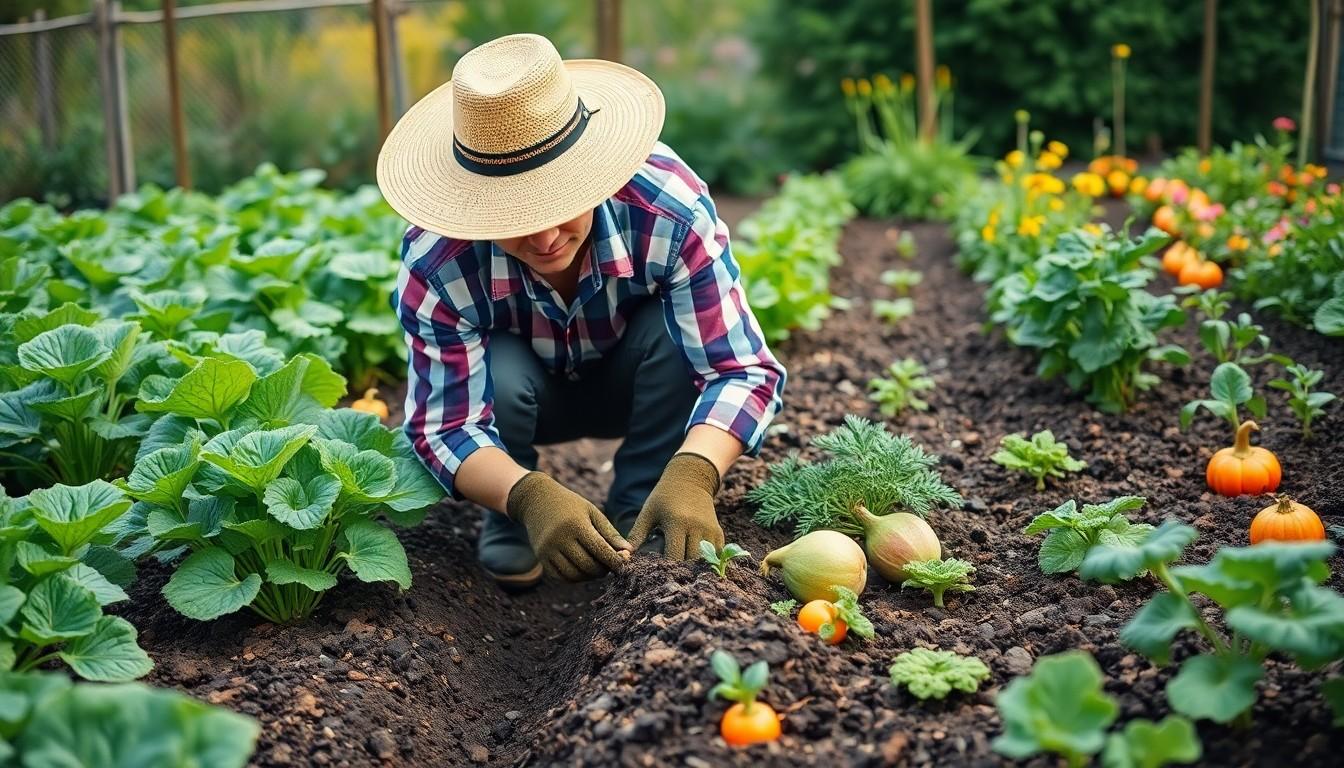Phone:
(701)814-6992
Physical address:
6296 Donnelly Plaza
Ratkeville, Bahamas.

Proper watering plays a crucial role in the success of a vegetable garden. Vegetables require consistent moisture to thrive and reach their full potential. Insufficient watering can lead to a range of issues, such as stunted growth and poor yield. On the other hand, excessive watering causes waterlogged soil, which can rot roots and foster diseases.
Understanding the water requirements of different vegetables is key. Root vegetables, like carrots and potatoes, typically need deep watering, while leafy greens, such as lettuce and spinach, thrive with regular, shallow watering. Tailoring the watering strategy to the needs of specific plants enhances growth and improves overall health.
Soil quality influences water retention and drainage. Clay soils retain moisture but may drain slowly. Sandy soils drain quickly, requiring more frequent watering. Amending soil with organic matter can enhance its ability to retain moisture, reducing watering frequency.
Timing of watering also matters. Early morning serves as the best time for watering, allowing plants to absorb moisture before the heat of the day. Evening watering poses risks due to prolonged humidity, increasing the likelihood of fungal diseases.
Mulching aids in moisture retention. Organic mulch, such as straw or wood chips, reduces evaporation and regulates soil temperature. A layer of mulch around plants promotes steady moisture levels, essential during hot months.
Finally, using efficient irrigation methods can conserve water. Drip irrigation and soaker hoses deliver water directly to plant roots, minimizing evaporation. Adopting these practices promotes healthier plants and more productive vegetable gardens.

Understanding various factors is crucial for effective vegetable garden watering. Soil type and weather conditions significantly influence watering schedules and methods.
Soil type determines how much water the garden retains. Clay soil holds moisture effectively while draining slowly. Sandy soil, on the other hand, drains quickly and requires frequent watering. Loamy soil strikes a balance between these extremes, offering good retention without becoming soggy. Assess soil composition to tailor watering needs accordingly. Amending soil with organic matter enhances moisture retention and improves overall health, benefiting vegetable growth.
Weather conditions play a vital role in watering strategies. Hot, dry days increase evaporation rates, necessitating more frequent watering. Cloudy, cool days typically require less water, as evaporation slows down. Rainfall also impacts irrigation decisions; gardens may not require additional water if recent rain occurred. Monitoring local weather forecasts allows for adjustments in watering schedules. Implementing strategies like rain gauges can help ensure proper moisture levels throughout the garden.
Effective watering methods play a crucial role in maintaining the health of a vegetable garden. Various techniques meet distinct needs.
Drip irrigation delivers water directly to the plant roots, minimizing evaporation. This method uses a system of tubing and emitters. Emitters release a slow, steady flow, ensuring that soil remains consistently moist. Vegetables thrive with this targeted approach, as it reduces water waste. Installing drip irrigation systems saves time while promoting healthier crops. Regular maintenance checks keep the emitters clear and effective.
Soaker hoses offer a simple and efficient way to irrigate a garden. Made from porous materials, they allow water to seep through directly into the soil. Placing soaker hoses around plants ensures deep moisture without soaking the leaves, reducing disease risk. This method also conserves water by minimizing runoff. It’s essential to monitor garden beds so the hoses are evenly distributed. Using a timer helps automate the watering process, promoting consistent moisture levels.
Hand watering allows for personalized attention to each vegetable plant. Using a watering can or hose, gardeners control the flow and distribution of water. It offers flexibility in adjusting to varying plant needs based on their growth stages. Hand watering promotes a connection to the garden, helping gardeners observe any issues firsthand. However, this method requires diligence and can become time-consuming. Timing the watering for early mornings or late afternoons maximizes efficiency and prevents evaporation.
Effective watering practices significantly impact vegetable garden health. Following these tips ensures that plants receive the moisture they need for growth.
Morning watering optimizes moisture retention in vegetable gardens. Cooler temperatures reduce evaporation, allowing water to seep into the soil effectively. Plants benefit from hydration before the heat of the day begins. Avoiding evening watering helps prevent fungal diseases caused by extended moisture on leaves overnight. Targeting the morning hours between 6 AM and 10 AM typically yields the best results.
Watering frequency varies based on weather, soil type, and plant needs. During hot, dry seasons, daily watering may be necessary, especially for sandy soils. In cooler, wetter periods, every few days may suffice, especially for clay or loamy soil types. Regularly observing plants for signs of wilting or drooping can guide adjustments in watering frequency. Uniformly moist soil promotes healthy root development, enhancing overall vegetable yield.
Overwatering vegetables causes waterlogged soil, leading to root rot and diseases. Ensuring moisture levels remain balanced is crucial for a thriving garden. Ignoring the specific watering needs of different vegetables results in uneven growth. For example, leafy greens prefer shallow, frequent watering, while root vegetables thrive with deep irrigation.
Delaying watering during heat waves might lead to irreversible damage. Monitoring plants for wilting signs can provide immediate insight into their hydration status. Choosing the wrong time of day for watering contributes to moisture loss. Watering in the early morning reduces evaporation, maximizing moisture retention in the soil.
Neglecting soil type impacts the watering schedule as well. Gardens with sandy soil drain quickly, requiring more frequent watering rounds. Failing to amend soil with organic matter can hinder moisture retention, creating challenges in maintaining consistent hydration.
Using ineffective irrigation methods may cause uneven watering across the garden. Drip irrigation systems and soaker hoses deliver water directly to roots, enhancing efficiency. Relying solely on hand watering can lead to inconsistent moisture levels, as it often lacks the precision and pressure of other methods.
Overlooking the effects of weather patterns also leads to mistakes. Hot, dry days necessitate increased watering, while cloudy days can allow for a lighter schedule. Adjusting watering practices in response to changing conditions ensures that vegetable plants receive adequate moisture.
Finally, skipping mulching prevents soil temperature regulation and moisture retention. Organic mulch acts as a barrier against evaporation, keeping roots cool and hydrated. Addressing these common mistakes fosters healthier vegetable plants, maximizing yield and growth potential.
Proper watering is vital for a thriving vegetable garden. By understanding the specific needs of different plants and considering soil type and weather conditions, gardeners can ensure their vegetables receive the right amount of moisture. Utilizing efficient irrigation methods like drip systems and soaker hoses not only conserves water but also promotes healthier plant growth.
Incorporating organic matter into the soil improves moisture retention, while mulching helps regulate temperature and reduce evaporation. By avoiding common watering mistakes and adjusting practices based on environmental factors, gardeners can maximize their vegetable yield and enjoy a bountiful harvest. Adopting these strategies leads to a flourishing garden that thrives season after season.